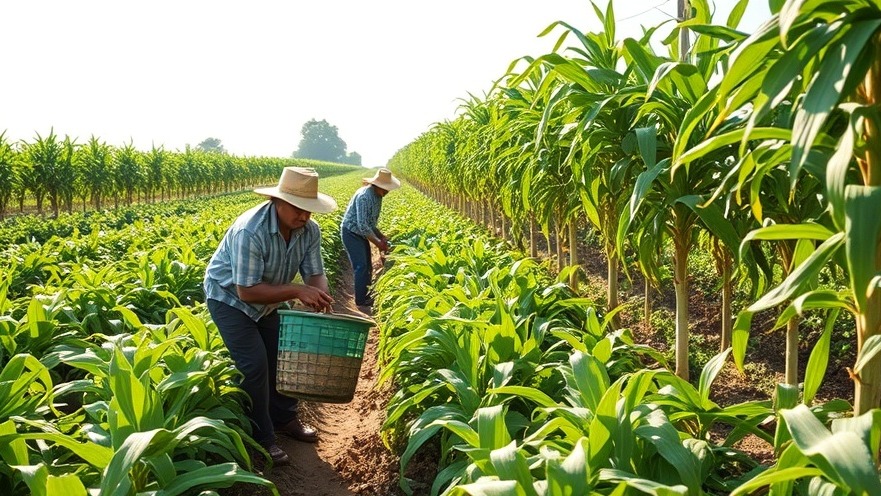
Texas Faces Labor Challenges Amid Immigration Crackdowns
Labor shortages in Texas's agriculture sector are becoming increasingly severe, driven in part by recent immigration policies. As U.S. Rep. Monica De La Cruz pointed out, a significant portion of the workforce in areas like Hidalgo County is undocumented. This has made farmers hesitant to retain their workers amid fears of immigration enforcement actions. Reports indicate that between 30% to 60% of farmworkers in California stopped showing up for work following raids, illustrating a larger trend affecting the agricultural workforce across the nation.
Revamping the Bracero Program for Modern Needs
In response to these mounting challenges, De La Cruz has introduced the "Bracero Program 2.0 Act." This new legislation aims to update and enhance the H-2A visa program, which allows temporary agricultural workers from abroad. Key components of the proposal include increasing wages for H-2A visa holders, simplifying the application process for employers, and introducing a pilot program that permits workers to change jobs within the state without reapplying for a visa. By revamping the program, De La Cruz hopes to bring stability to farming communities while providing essential labor support.
Impact on Local Farmers and the Economy
The proposed changes could have a substantial impact on the Texas economy, particularly in farming regions. Farmers from the Texas Farm Bureau have expressed their approval of proposals for a streamlined application process and higher wages, which they argue would attract a more stable workforce. "Right now, the process is cumbersome; anything that simplifies it is welcome," said Laramie Adams, government affairs director for the organization.
Historical Context: Lessons from the Past
Named after the original Bracero Program from the 1940s, which allowed Mexican workers to fill labor gaps, this modern iteration aims to address similar needs in a very different socio-political climate. The original program eventually faced criticism for poor labor conditions and lack of protections for workers. Advocates for the new initiative are pushing for measures that not only increase workforce availability but also ensure better working conditions for hired laborers.
Future Predictions and Trends in Agricultural Labor
As labor shortages continue to plague the agricultural sector, evolving these visa programs could lead to a shift in how farming operates in Texas. Experts predict that if the Bracero Program 2.0 is implemented effectively, it could serve as a model for other states experiencing similar labor challenges. By fostering labor stability, Texas could alleviate some economic pressure on farmers and support sustainable agricultural practices moving forward.
Diverse Perspectives on Agricultural Immigration Reforms
While many support De La Cruz's proposed bill, others raise concerns. Some advocate for a stricter immigration policy, arguing that it is essential for national security and job competition for American citizens. The tension between these two perspectives highlights the complexities in addressing labor shortages while also navigating immigration reform. As Texas continues to grapple with these issues, debates about agricultural labor will likely evolve, with stakeholders on all sides contributing to the conversation.
Conclusion: The Necessity for Legislative Action
In conclusion, the introduction of the Bracero Program 2.0 represents a critical step in addressing labor shortages within Texas agriculture. As lawmakers debate its merit, the overarching goal remains clear: to create a system that benefits both workers and employers. With rising demands for agricultural products and labor woes intensifying, the time for thoughtful reform is now.
 Add Element
Add Element  Add Row
Add Row 



Write A Comment